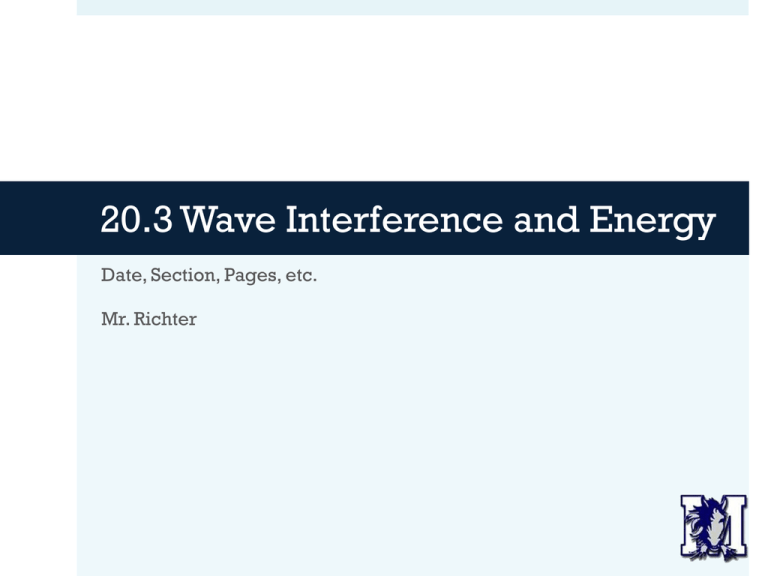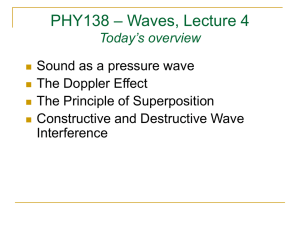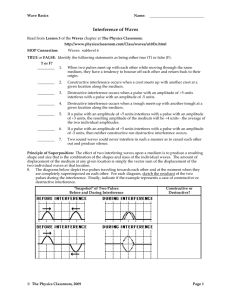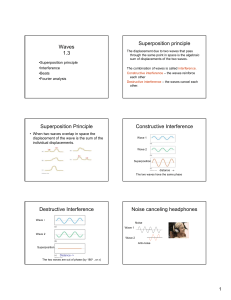20.3 Wave Interference and Energy
advertisement

20.3 Wave Interference and Energy Date, Section, Pages, etc. Mr. Richter Agenda Warm Up Collect Labs Review HW Introduction to Interference Notes: The Superposition Principle Waves and Energy Objectives: We Will Be Able To… Describe the superposition principle with constructive and destructive interference. Explain which properties affect wave energy and why. Warm-Up: Can two waves be in the same place at the same time? If yes, what do you think happens there? If not, why not? The Superposition Principle The Superposition Principle Waves are not physical things. They are energy. This means the more than one wave can exist in the same place at the same time. Think about sound: can you hear more than one thing at once? Of course! The Superposition Principle When waves collide, their vibrations combine. The superposition principle states that the total vibration at any point is the sum of the vibrations of each individual wave. The Superposition Principle: Constructive Interference Constructive interference occurs when two wave pulses combine to make a larger amplitude. Example: if the number of guitars playing the same note is doubled, the amplitude is increased (it gets louder!) The Superposition Principle: Destructive Interference Destructive interference occurs when two wave pulses combine to make a smaller amplitude. Example: noise-cancelling head phones. Waves and Energy Waves and Energy Reminder: the main idea about waves – Waves transfer energy from place to place without transferring matter. There are two factors that affect the energy of a wave: frequency – how often the energy arrives amplitude – how much energy arrives each time Waves and Energy: Frequency The greater the frequency of a wave, the more energy it carries. Wave energy is proportional to frequency. Example: trying to whip a rope more often. Waves and Energy: Amplitude The greater the amplitude of a wave, the more energy it carries. Wave energy is proportional to amplitude. Example: turning up the volume. Wrap-Up: Did we meet our objectives? Describe the superposition principle with constructive and destructive interference. Explain which properties affect wave energy and why. Homework p. 447 #1, 2, 4, 5








